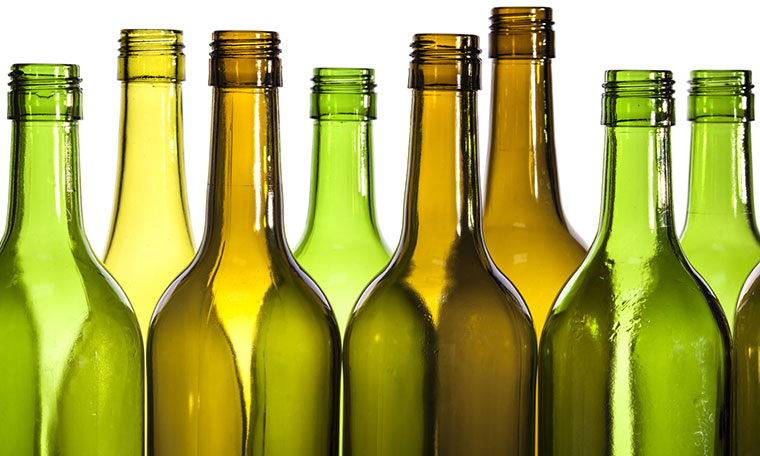Glass bottles have actually been a crucial part of the human culture since centuries ago during which they served as stores for holding different kinds of liquids and substances. Their capability of staying long, plethora of uses and ecofriendly nature have made them the best for packaging across a lot of industries. In this article, we shed light on the universe of glass bottles emanating from their history, production process, use(s) , and environment. If you want to learn more about the fascinating world of glass bottles, keep reading!
Introduction to Glass Bottles
Glass bottles, which earned their fame for appearing transparent, strong, and inert, were traced back to civilizations even at the time of the antiquity. At the beginning, the manufacture of glass bottles was done manually, and the production of bottles has gone through a massive change since those days as it can now serve varying consumer needs and tastes.
Bottle Born History and Evolution
Glass making is believed to have started in Mesopotamia in the years around 3500 BC, when some of the early artisans mastered techniques of moulding the molten glass into numerous objects such as bottles. As the methods of glassmaking progressed, from the first glassblowing invented in the 1st century BCE to a more efficient production of glass containers, such bottling became an integral part of our culture.
Advantages of Glass Bottles
Sustainability
Glass bottles are a sustainable type of package, because they are recyclable and resistant to tearing. In contrast with plastic bottles that worsen the environmental pollution, the glass bottles can be recycled infinitely, preserving their quality, which means that the demand for raw materials will decrease.
Recyclability
One of the most important advantages of glass bottle is that they can be recycled. When sorted and recycled, bottles are being re-melted and reused as new containers, which means less energy consumption and lower carbon emissions, among other things.
Preservation of Content
The glass bottles offer unbeatable protection against factors such as UV-light, moisture and air which is better for preserving the freshness and quality of their contents. This is very beneficial when it comes to keeping the most suitable temperature for storing beverages, pharmaceuticals, and perfumes.
Types of Glass Bottles
The glass bottle range includes different shapes, sizes and colors that vary and adapt to provide specific packaging needs and meet design needs. Popular types include the clear glass bottles, tinted glass bottles, and decorated glass bottles with various designs.
Manufacure of Glass Bottles
The glass bottle production process comprises the series of stages, which starts from the selection of the raw materials including sand, soda ash, and limestone. They are poured into the furnace, heated at high temperatures to form a molten liquid which is then shaped into bottles under different manufacturing methods such as molding and automated machinery.
Applications of Glass Bottles
Glass bottles are multipuplisive in the industries, example is in beer or wine packaging, perfume bottles, and pharmaceutical packaging. They display high versatility, quick response and compatibility with various materials, constantly preserving the integrity of the stored objects from disastrous external factors.
Glass bottles may have a negative effect resulting to the environment.
Comparison with Plastic Bottles
To plastic bottles which is problematic in terms of plastic nonbiodegradability glass bottle stands more sustainable choice. Glass is composed of unbreakable chemical compounds and is non leaching which contributes to a safer environment as both the consumers and the planet are not polluted by harmful chemicals.
Recycling Initiatives
The glass bottle recycling has received prominent attention for a while now, following the growing global concern on environmental conservation and diversion from landfills. In many countries people recycle in many ways. They enable users to throw glass bottles of locally instead.
Challenges and Limitations
While they bring many benefits such as their transparency, weightlessness and recyclability, glass bottles may face some difficulties, like fragmentation, highweight and production. Plastic bottle is a better choice in the segments where the strength is essential, as the volume of plastic bottles is more susceptible to breaking than it is for the glass containers.
Developments within the concept of Glass Bottle are no longer to be ignored.
To tackle the issues inherent with the traditional glass bottles old-fashioned designs newer designs has been introduced which includes lightweighting, and design improvements in the caps. With these innovations in mind, the overall focus of glass bottles will be to improve their functionality, usability, and sustainability and at the same time, reduce the ecological impact they create.
Consumer Trends and Preferences
More and more customers feel eco-friendly commodities to be more appealing so there is an increasing demand for glass that is employed as packaging material of goods in the market. As environmental concern becomes more relevant in consumer purchasing decisions people begin to choose sustainable packaging made of materials like glass.
Future Outlook
The future of glass bottles is better than it is today due to the developments in the manufacturing processes which include cutting down the input of pollutants into the environment as well as responses to the changing consumer demands. With the sustainability factor still going strong as innovation in the packaging industry, glass bottles can be expected to remain as preferred design for ecology-conscious consumers until the end of nought
Conclusion
Lastly, glass bottles display a range of flexibility, sustainability and visual superiority which enable them to maintain their position as a part of the present day packaging products. Customers are expected to continue to equate their purchase decision with sustainability, and this is where glass bottles can create a niche for themselves with the growth in technology and rise in environmental consciousness.
FAQs
Why do the glass bottles need to be made in such a way?
The formation of glass bottles is done by melting down the mixture of the silica sand, soda ash, and limestone in high-temperature furnaces, making the shapes using molds or by automated machinery, and cooling the material down to bring it to its solid form.
Question – Do glass bottles beat plastic more for the environment?
On the positive side, glass bottles are definitely more environment friendly as compared to plastic bottles because of their recycling feasibility, inertia and zero potential to contaminate the content they contain.
Could a glass bottle be recycled?
Absolutely, glass bottles can be recycled many times over after they have gone through a thorough cleaning and sanitation process. Using glass bottles again, reduces the waste of precious resources and cuts.
What glass bottles are highly prevalent in the workplace and in households?
Glass bottles are widely used in filling up, not only for the beverage, but also perfumes, pharmaceuticals, sauces, and other liquids or semi-solid substances.
Do you have other prospects than glass bottles yourself?
But despite this, the trend is emerging for other options that include aluminum cans, cartons, and biodegradable plastics which are taking more space in the market.
Read More







